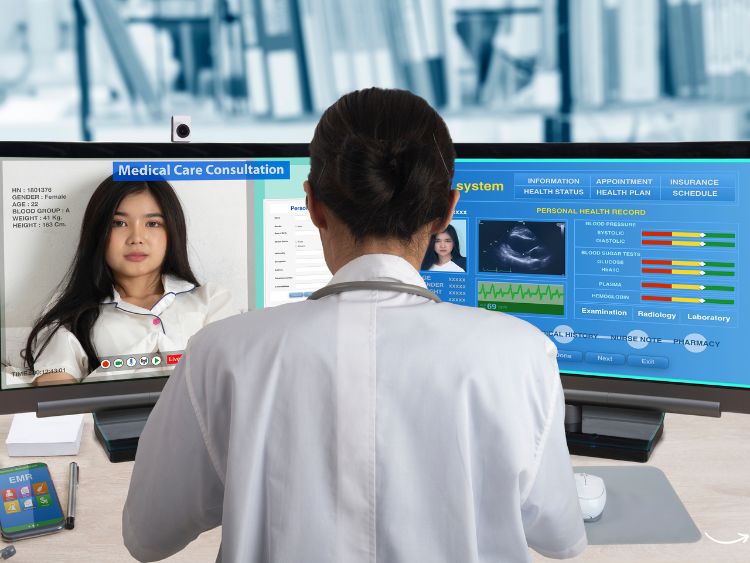Ever wondered how doctors keep track of all your health information without getting lost in the details? That’s where Electronic Health Record (EHR) templates come into play. These templates are the unsung heroes of modern healthcare, ensuring your medical history is meticulously recorded and easily accessible. In this comprehensive guide, we’ll delve into the world of electronic health record templates, exploring what they are, their benefits, and how to choose the right one for your practice.
What is an Electronic Health Record Template?
An Electronic Health Record (EHR) template is a pre-designed digital document used to record and manage patient information systematically. These templates standardize the way data is entered into an EHR system, making it easier for healthcare providers to capture consistent and accurate patient data. They can be customized to meet the specific needs of different medical specialties, ensuring that all relevant information is captured efficiently.
Benefits of Using Electronic Health Record Templates
1. Improved Efficiency
EHR templates streamline the process of data entry, allowing healthcare providers to document patient information quickly and accurately. This efficiency reduces the time spent on administrative tasks, giving providers more time to focus on patient care.
2. Enhanced Accuracy
By providing a standardized format for data entry, EHR templates minimize the risk of errors and inconsistencies. This accuracy is crucial for maintaining reliable patient records and ensuring effective communication among healthcare team members.
3. Better Patient Care
With comprehensive and easily accessible patient records, healthcare providers can make more informed decisions about patient care. EHR templates ensure that all relevant information is available at a glance, facilitating timely and effective treatment.
4. Compliance and Reporting
EHR templates help healthcare providers comply with regulatory requirements by ensuring that all necessary information is documented. This compliance is essential for accurate reporting and avoiding potential legal issues.
Key Features of an Effective EHR Template
1. Customization
An effective EHR template should be customizable to meet the specific needs of different medical specialties. This customization allows providers to capture all relevant information without unnecessary clutter.
2. User-Friendly Interface
The template should have a user-friendly interface that makes data entry intuitive and straightforward. This ease of use is crucial for ensuring that providers can document information efficiently without getting bogged down by complex forms.
3. Integration with EHR Systems
A good EHR template should seamlessly integrate with existing EHR systems. This integration ensures that all data is stored in a centralized location, making it easy to access and manage patient records.
4. Security Features
Given the sensitive nature of patient information, an effective EHR template must include robust security features. These features help protect patient data from unauthorized access and ensure compliance with privacy regulations.
How to Choose the Right EHR Template for Your Practice
1. Assess Your Needs
Start by assessing the specific needs of your practice. Consider the types of information you need to capture, the volume of patients you see, and any regulatory requirements you must meet.
2. Evaluate Customization Options
Look for templates that offer a high degree of customization. This flexibility ensures that the template can be tailored to your practice’s unique requirements, improving efficiency and accuracy.
3. Check for Integration
Ensure that the template can integrate seamlessly with your existing EHR system. This integration is crucial for maintaining a centralized patient record and avoiding data silos.
4. Consider User Experience
Evaluate the user interface of the template. A user-friendly design will make it easier for your staff to document patient information accurately and efficiently, reducing the likelihood of errors.
5. Review Security Features
Given the importance of patient data security, choose a template with robust security features. Look for templates that comply with industry standards and regulations to protect patient information.
Common Challenges and How to Overcome Them
1. Resistance to Change
Implementing a new EHR template can be met with resistance from staff who are accustomed to existing workflows. Overcome this challenge by providing comprehensive training and highlighting the benefits of the new template.
2. Data Migration
Migrating data from an old system to a new EHR template can be complex. Ensure a smooth transition by planning the migration process carefully and seeking support from your EHR vendor.
3. Customization Complexity
Customizing an EHR template to meet specific needs can be time-consuming. Simplify the process by involving key stakeholders in the customization process and prioritizing the most critical requirements.
FAQs About Electronic Health Record Templates
Q: What is the primary purpose of an EHR template? A: The primary purpose of an EHR template is to standardize the way patient information is documented, improving efficiency, accuracy, and patient care.
Q: Can EHR templates be customized for different medical specialties? A: Yes, EHR templates can be highly customized to meet the specific needs of different medical specialties, ensuring that all relevant information is captured.
Q: How do EHR templates improve patient care? A: EHR templates improve patient care by providing comprehensive and easily accessible patient records, enabling healthcare providers to make informed decisions about treatment.
Q: What security features should an EHR template have? A: An effective EHR template should include robust security features such as data encryption, user authentication, and compliance with privacy regulations.
Q: How can I ensure a smooth transition to a new EHR template? A: Ensure a smooth transition by providing comprehensive training to staff, planning the data migration process carefully, and seeking support from your EHR vendor.
Conclusion
Electronic health record templates are indispensable tools in modern healthcare, streamlining the documentation process and enhancing patient care. By choosing the right template and overcoming common challenges, healthcare providers can ensure efficient, accurate, and secure management of patient information. Remember, the key to success lies in customization, user-friendly design, integration, and robust security features.
Authoritative Links
- https://www.healthit.gov
- https://www.himss.org
- https://www.ama-assn.org
- https://www.jamanetwork.com
- https://www.ncbi.nlm.nih.gov
By following these guidelines and incorporating the elements discussed, you’ll be well on your way to creating an EHR template that meets the needs of your practice and enhances patient care.

